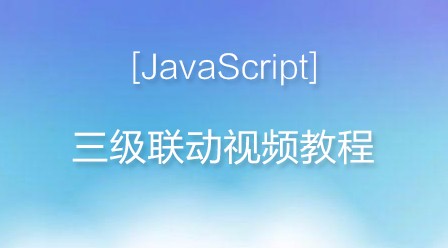最近做验证码,参考网上案例,发现有不少问题,特意进行了修改和完善。
验证码生成器:
import javax.imageio.ImageIO;
import java.awt.*;
import java.awt.image.BufferedImage;
import java.io.FileOutputStream;
import java.io.IOException;
import java.io.OutputStream;
import java.util.Date;
import java.util.Random;
/**
* 验证码生成器
*
* @author
*/
public class ValidateCode {
// 图片的宽度。
private int width = 160;
// 图片的高度。
private int height = 40;
// 验证码字符个数
private int codeCount = 5;
// 验证码干扰线数
private int lineCount = 150;
// 验证码
private String code = null;
// 验证码图片Buffer
private BufferedImage buffImg = null;
// 验证码范围,去掉0(数字)和O(拼音)容易混淆的(小写的1和L也可以去掉,大写不用了)
private char[] codeSequence = {'A', 'B', 'C', 'D', 'E', 'F', 'G', 'H', 'I', 'J',
'K', 'L', 'M', 'N', 'P', 'Q', 'R', 'S', 'T', 'U', 'V', 'W',
'X', 'Y', 'Z', '1', '2', '3', '4', '5', '6', '7', '8', '9'};
/**
* 默认构造函数,设置默认参数
*/
public ValidateCode() {
this.createCode();
}
/**
* @param width 图片宽
* @param height 图片高
*/
public ValidateCode(int width, int height) {
this.width = width;
this.height = height;
this.createCode();
}
/**
* @param width 图片宽
* @param height 图片高
* @param codeCount 字符个数
* @param lineCount 干扰线条数
*/
public ValidateCode(int width, int height, int codeCount, int lineCount) {
this.width = width;
this.height = height;
this.codeCount = codeCount;
this.lineCount = lineCount;
this.createCode();
}
public void createCode() {
int x = 0, fontHeight = 0, codeY = 0;
int red = 0, green = 0, blue = 0;
x = width / (codeCount + 2);//每个字符的宽度(左右各空出一个字符)
fontHeight = height - 2;//字体的高度
codeY = height - 4;
// 图像buffer
buffImg = new BufferedImage(width, height, BufferedImage.TYPE_INT_RGB);
Graphics2D g = buffImg.createGraphics();
// 生成随机数
Random random = new Random();
// 将图像填充为白色
g.setColor(Color.WHITE);
g.fillRect(0, 0, width, height);
// 创建字体,可以修改为其它的
Font font = new Font("Fixedsys", Font.PLAIN, fontHeight);
// Font font = new Font("Times New Roman", Font.ROMAN_BASELINE, fontHeight);
g.setFont(font);
for (int i = 0; i < lineCount; i++) {
// 设置随机开始和结束坐标
int xs = random.nextInt(width);//x坐标开始
int ys = random.nextInt(height);//y坐标开始
int xe = xs + random.nextInt(width / 8);//x坐标结束
int ye = ys + random.nextInt(height / 8);//y坐标结束
// 产生随机的颜色值,让输出的每个干扰线的颜色值都将不同。
red = random.nextInt(255);
green = random.nextInt(255);
blue = random.nextInt(255);
g.setColor(new Color(red, green, blue));
g.drawLine(xs, ys, xe, ye);
}
// randomCode记录随机产生的验证码
StringBuffer randomCode = new StringBuffer();
// 随机产生codeCount个字符的验证码。
for (int i = 0; i < codeCount; i++) {
String strRand = String.valueOf(codeSequence[random.nextInt(codeSequence.length)]);
// 产生随机的颜色值,让输出的每个字符的颜色值都将不同。
red = random.nextInt(255);
green = random.nextInt(255);
blue = random.nextInt(255);
g.setColor(new Color(red, green, blue));
g.drawString(strRand, (i + 1) * x, codeY);
// 将产生的四个随机数组合在一起。
randomCode.append(strRand);
}
// 将四位数字的验证码保存到Session中。
code = randomCode.toString();
}
public void write(String path) throws IOException {
OutputStream sos = new FileOutputStream(path);
this.write(sos);
}
public void write(OutputStream sos) throws IOException {
ImageIO.write(buffImg, "png", sos);
sos.close();
}
public BufferedImage getBuffImg() {
return buffImg;
}
public String getCode() {
return code;
}
/**
* 测试函数,默认生成到d盘
* @param args
*/
public static void main(String[] args) {
ValidateCode vCode = new ValidateCode(160,40,5,150);
try {
String path="D:/"+new Date().getTime()+".png";
System.out.println(vCode.getCode()+" >"+path);
vCode.write(path);
} catch (IOException e) {
e.printStackTrace();
}
}
}下面是页面JS调用验证码
// 刷新图片
function changeImg() {
var imgSrc = $("#imgObj");
var url = imgSrc.attr("src");
imgSrc.attr("src", changeUrl(url));
}
//为了使每次生成图片不一致,即不让浏览器读缓存,所以需要加上时间戳
function changeUrl(url) {
var timestamp = (new Date()).valueOf();
var index = url.indexOf("?");
console.log(index);
if (index > 0) {
url = url.substring(0, url.indexOf("?"));
}
console.log(url);
if ((url.indexOf("&") > 0)) {
url = url + "×tamp=" + timestamp;
console.log(url);
} else {
url = url + "?timestamp=" + timestamp;
console.log(url);
}
return url;
}下面是controller层输出验证码
/**
* 响应验证码页面
* @return
*/
@RequestMapping(value="/validateCode")
public String validateCode(HttpServletRequest request,HttpServletResponse response) throws Exception{
// 设置响应的类型格式为图片格式
response.setContentType("image/jpeg");
//禁止图像缓存。
response.setHeader("Pragma", "no-cache");
response.setHeader("Cache-Control", "no-cache");
response.setDateHeader("Expires", 0);
HttpSession session = request.getSession();
ValidateCode vCode = new ValidateCode(120,40,5,100);
session.setAttribute("code", vCode.getCode());
vCode.write(response.getOutputStream());
return null;
}下面是controller层验证验证码输入是否正确
String code = request.getParameter("code");
HttpSession session = request.getSession();
String sessionCode = (String) session.getAttribute("code");
if (!StringUtils.equalsIgnoreCase(code, sessionCode)) { //忽略验证码大小写
throw new RuntimeException("验证码对应不上code=" + code + " sessionCode=" + sessionCode);
}以上就是详解java图形验证码生成工具类web页面校验验证码的代码案例的详细内容,更多请关注php中文网其它相关文章!



















